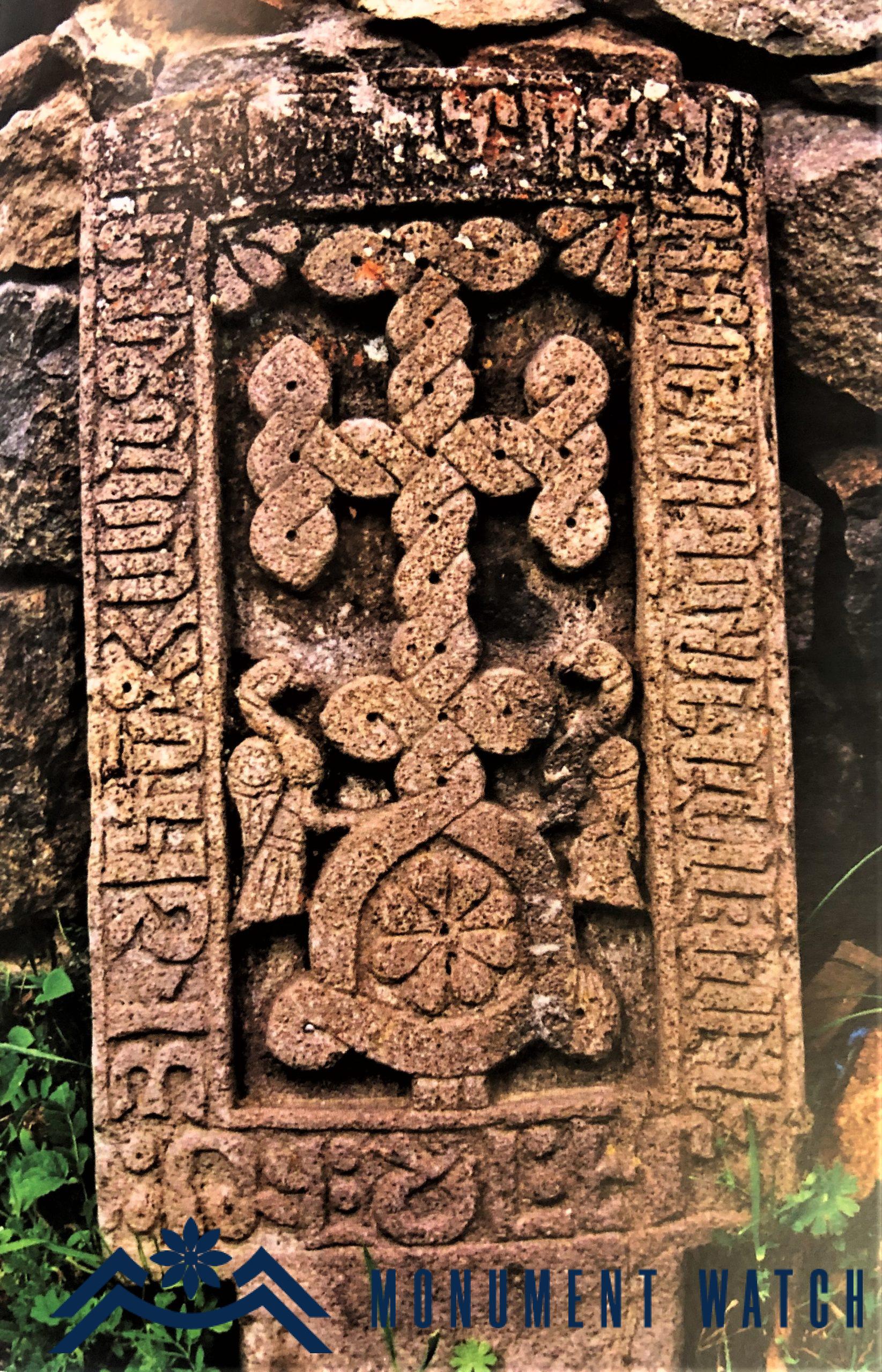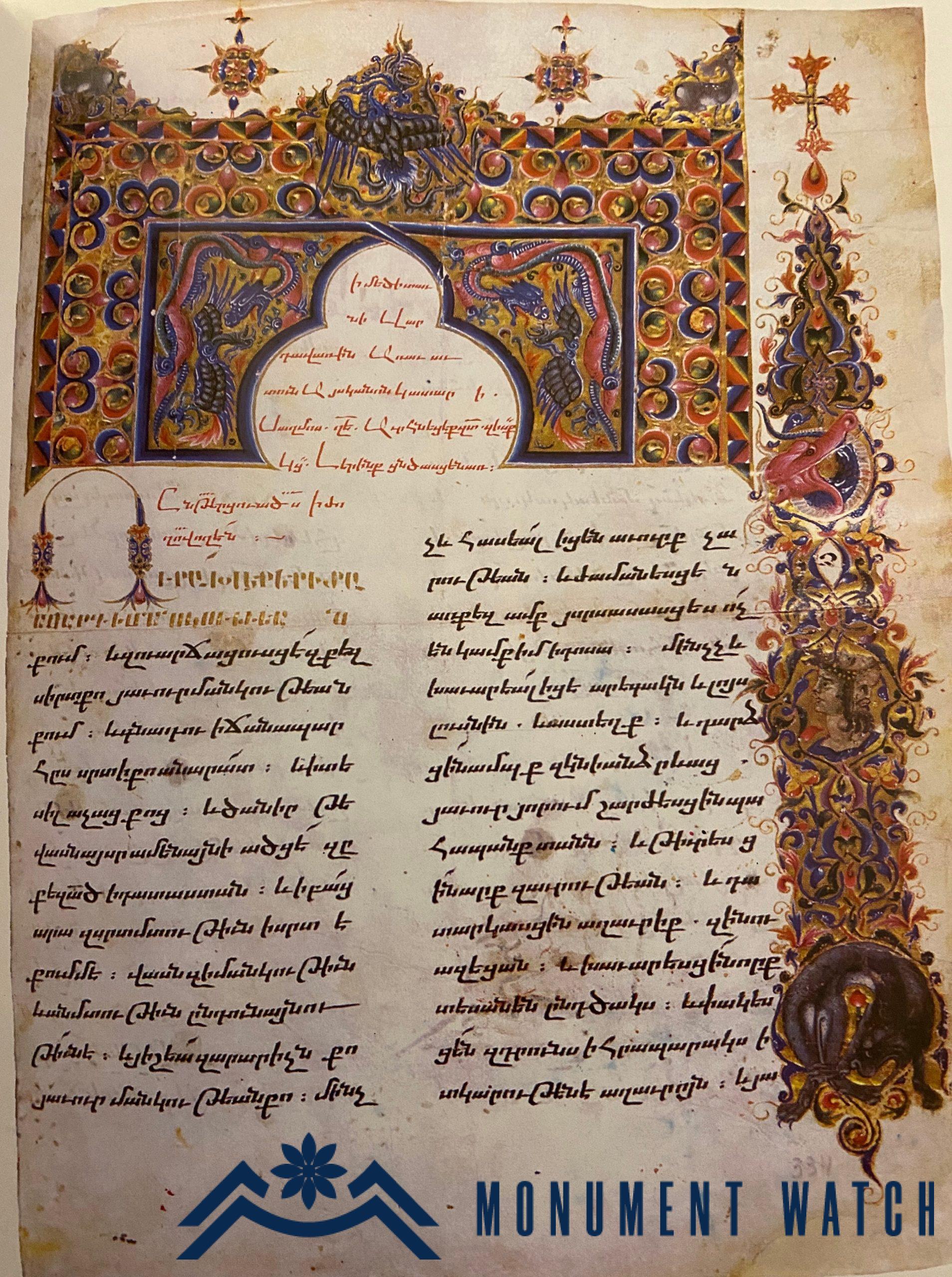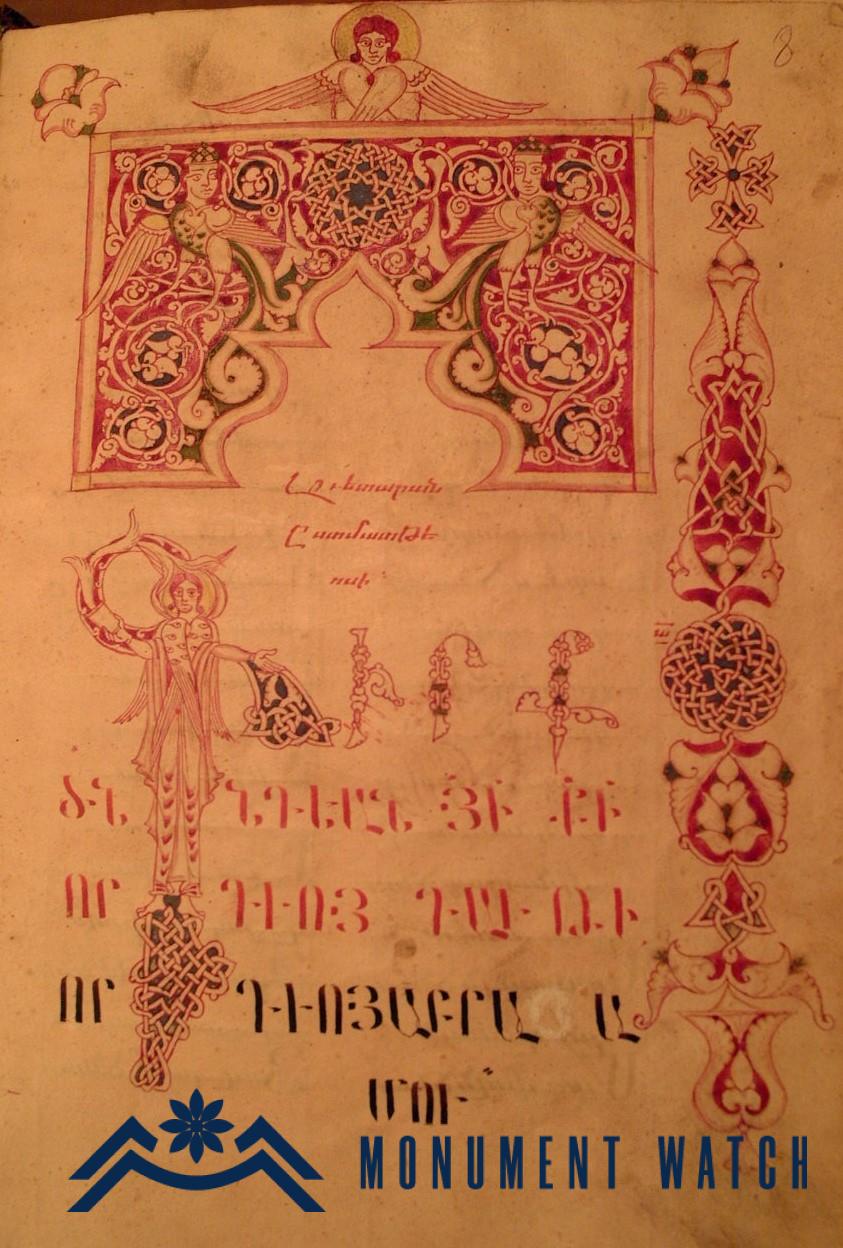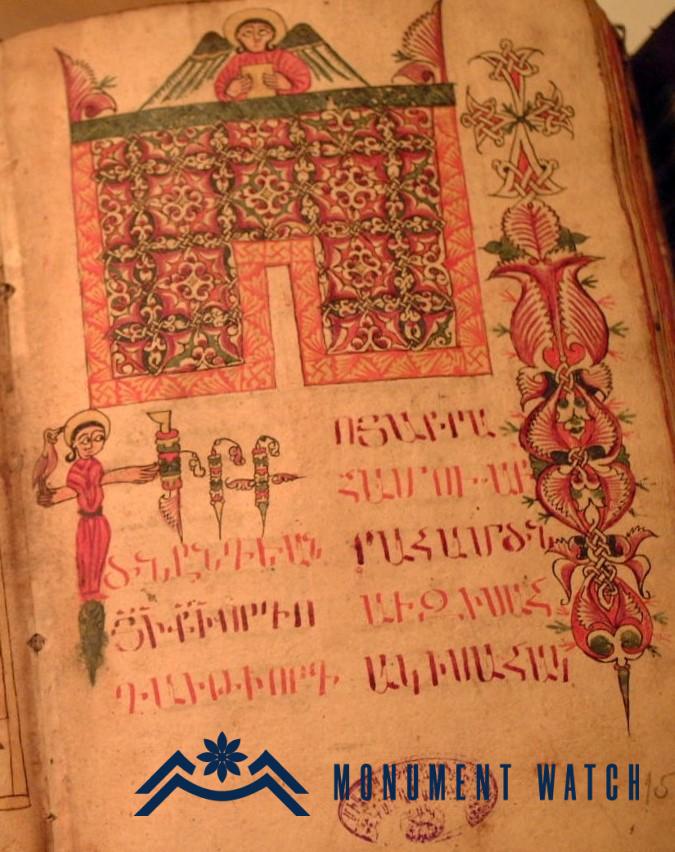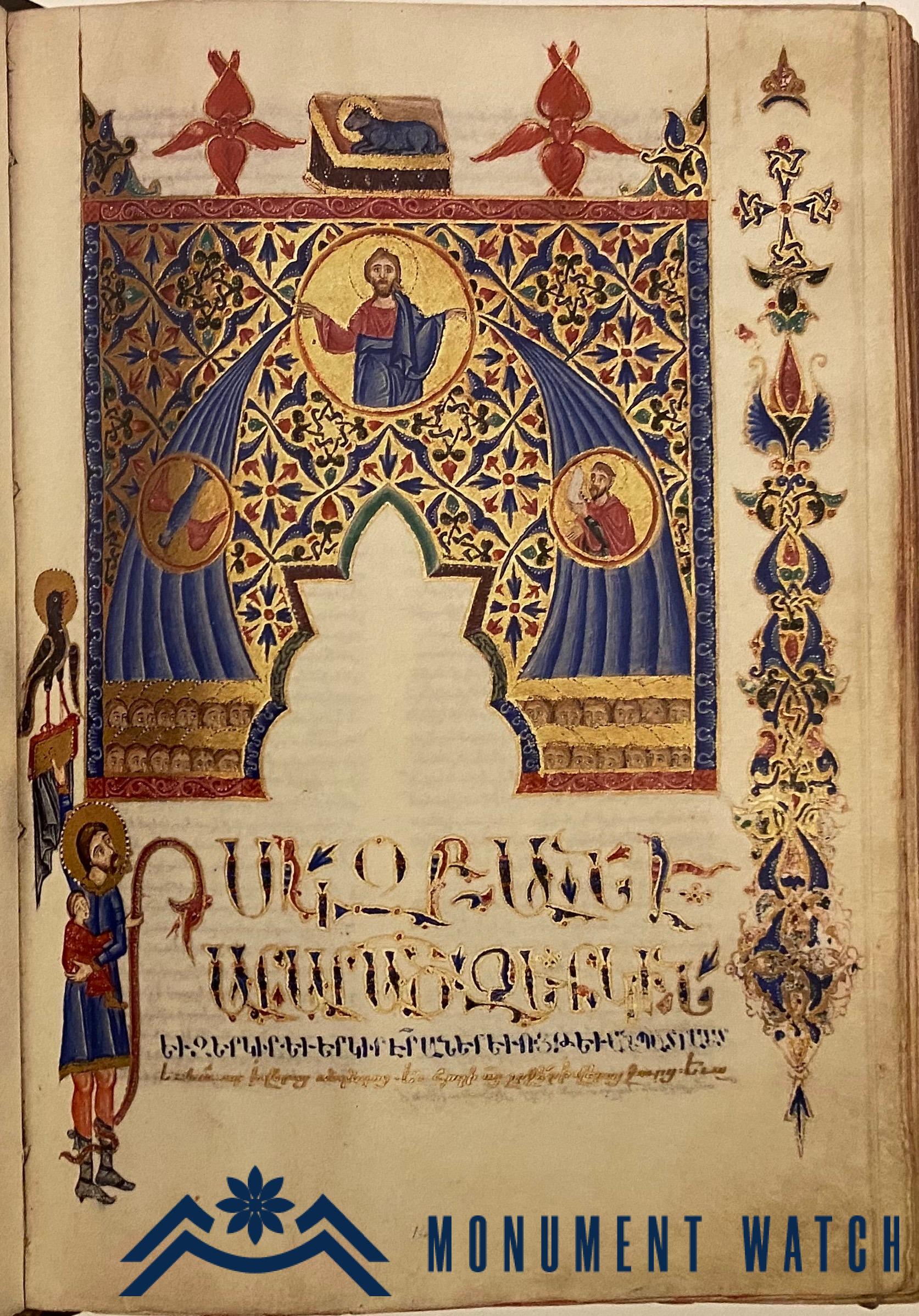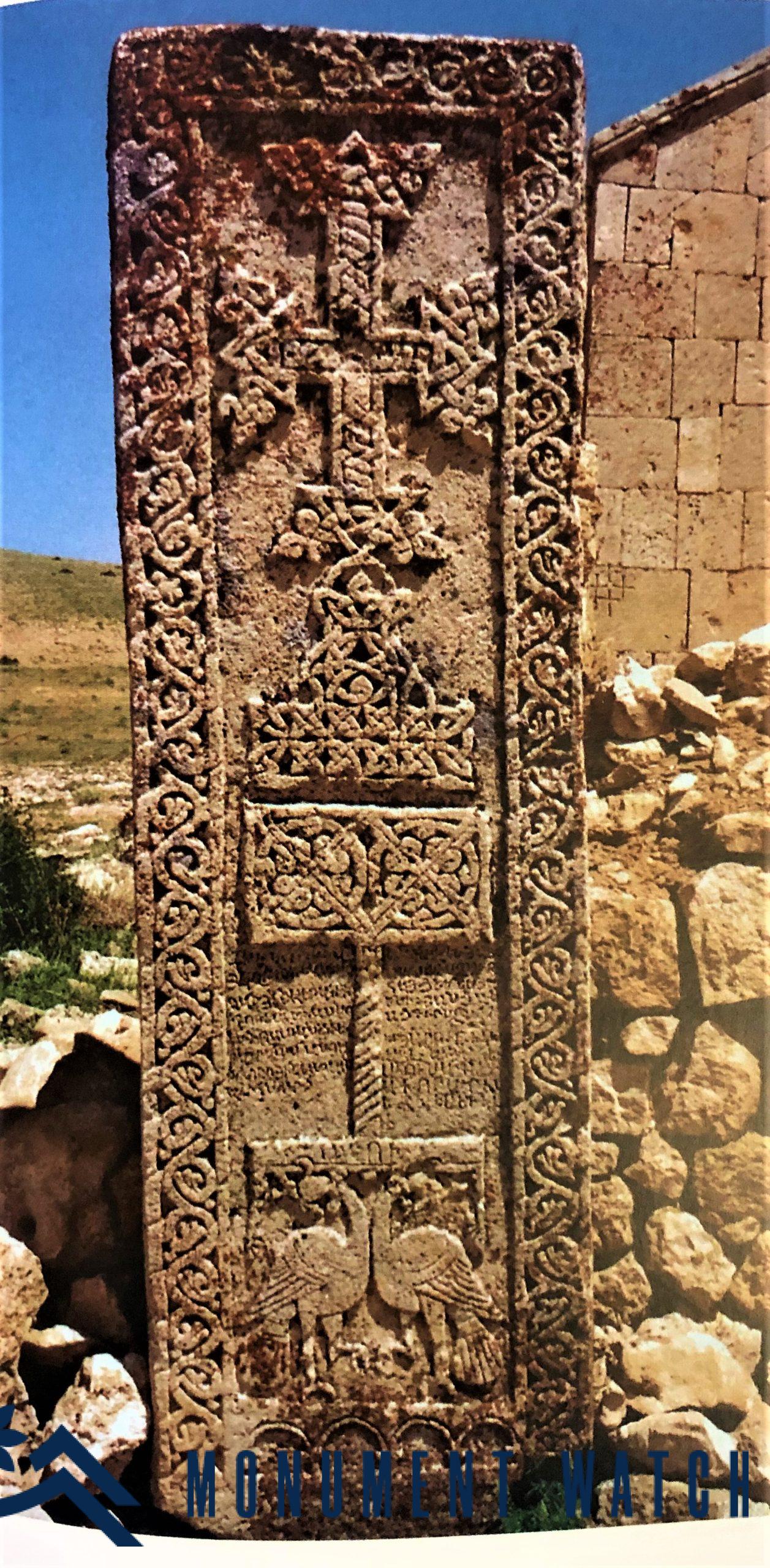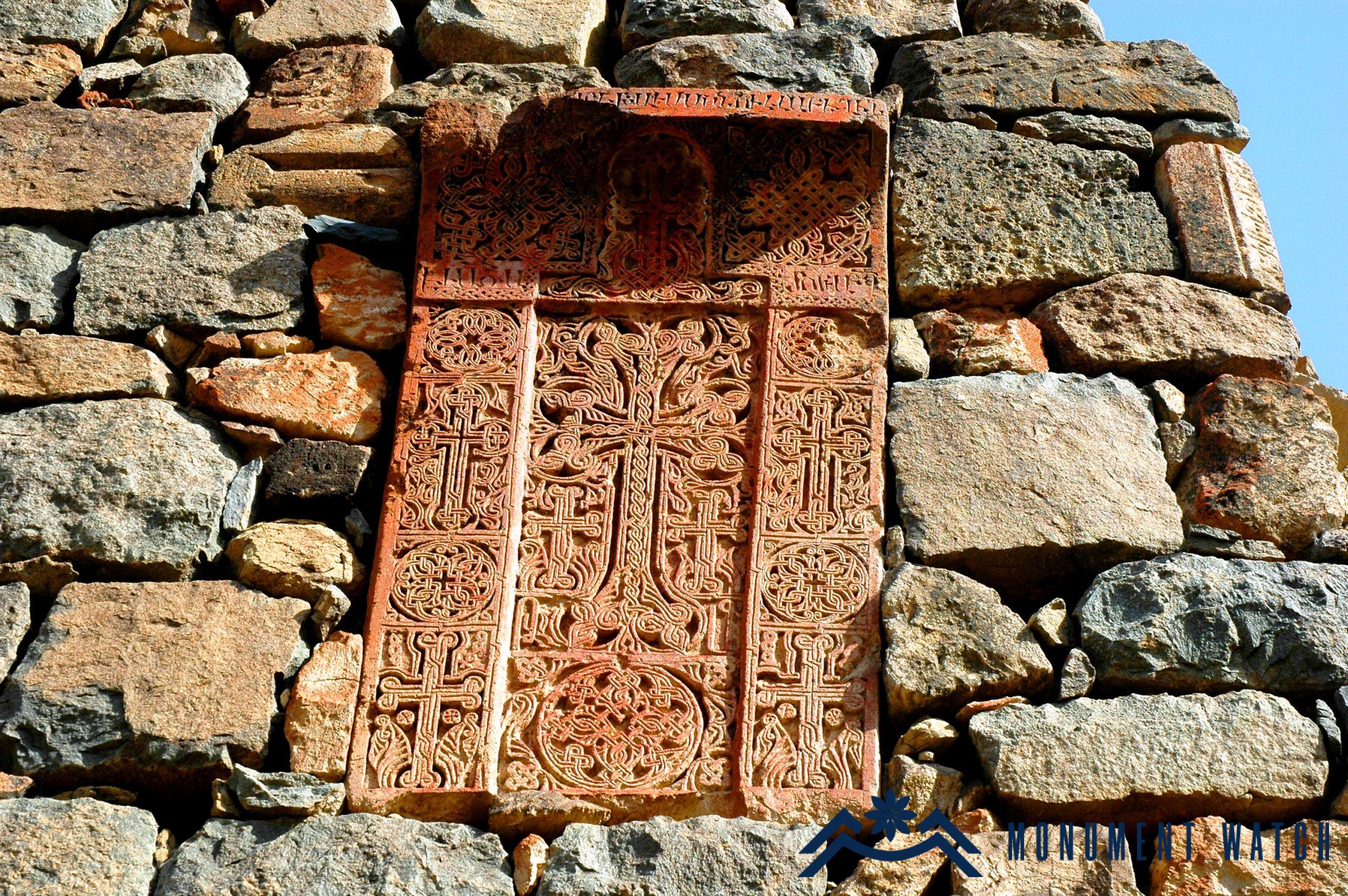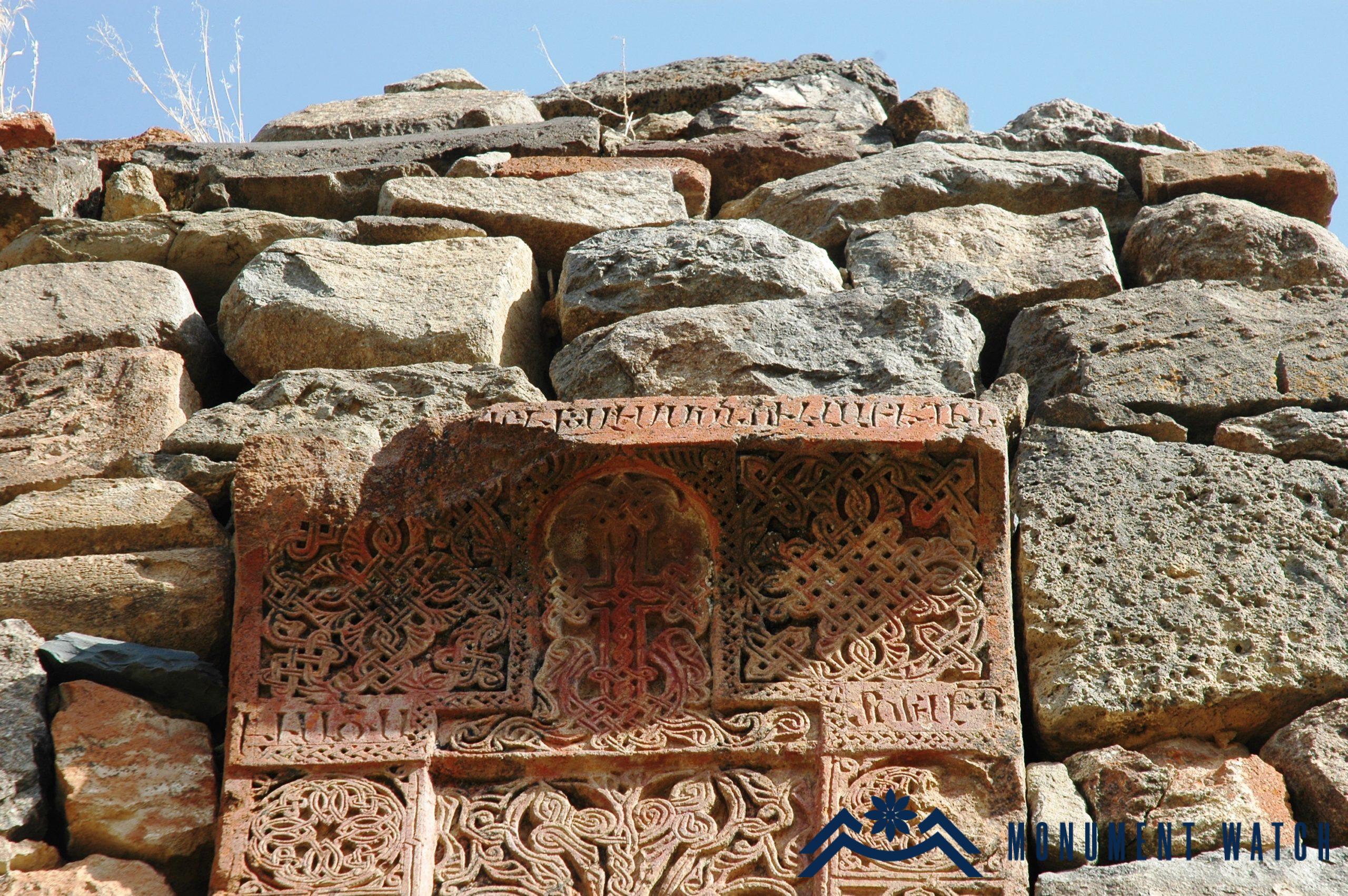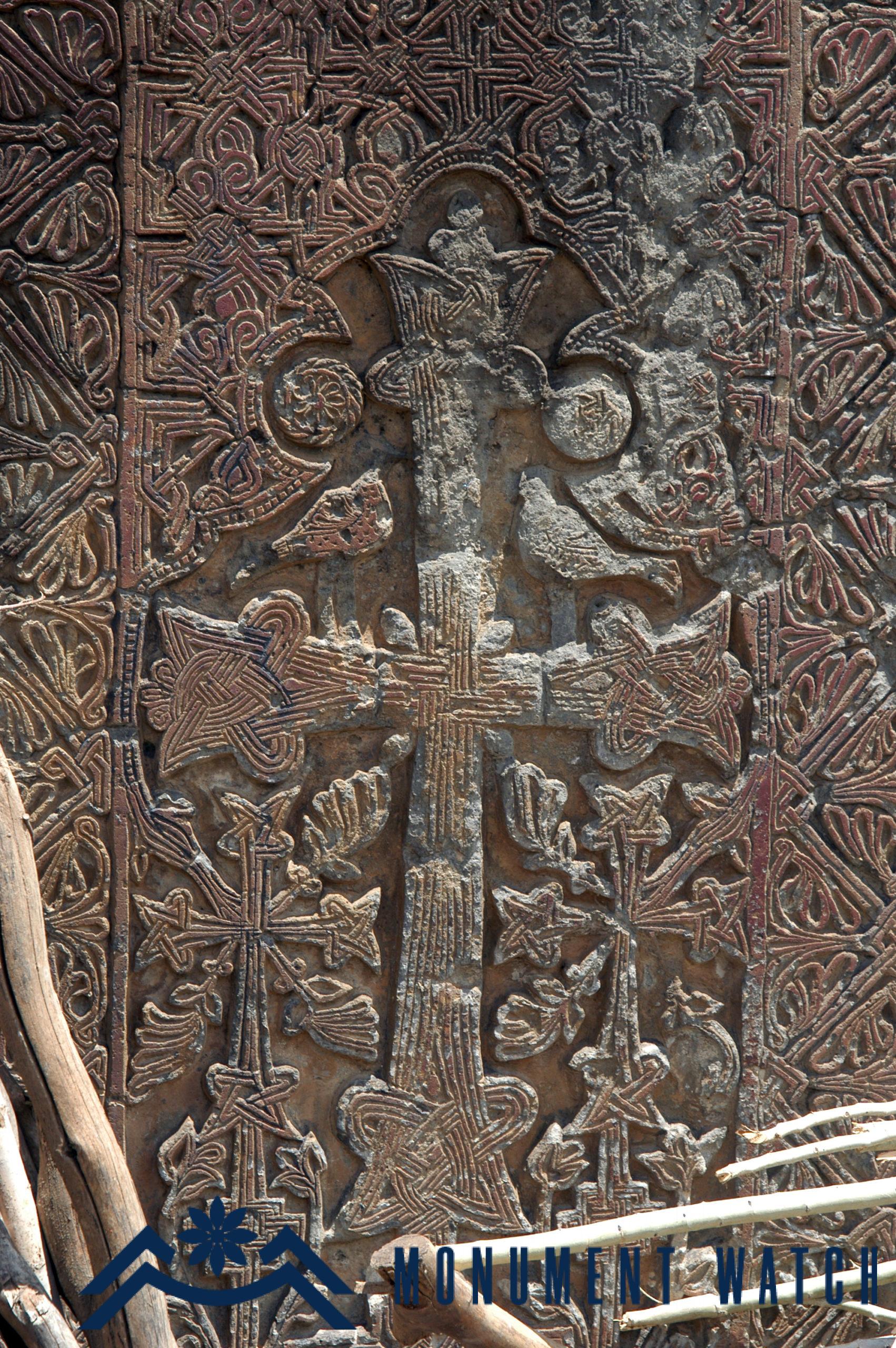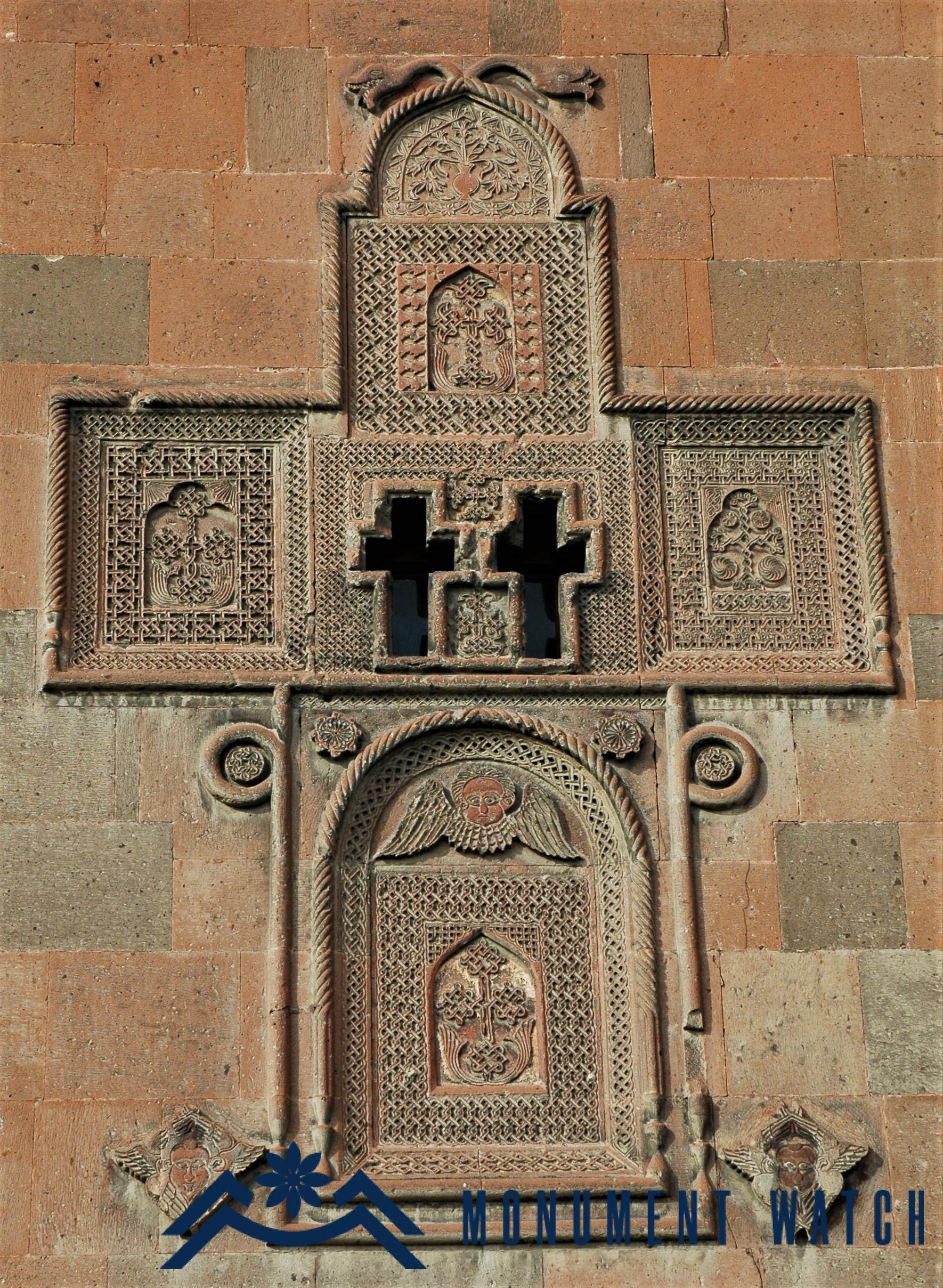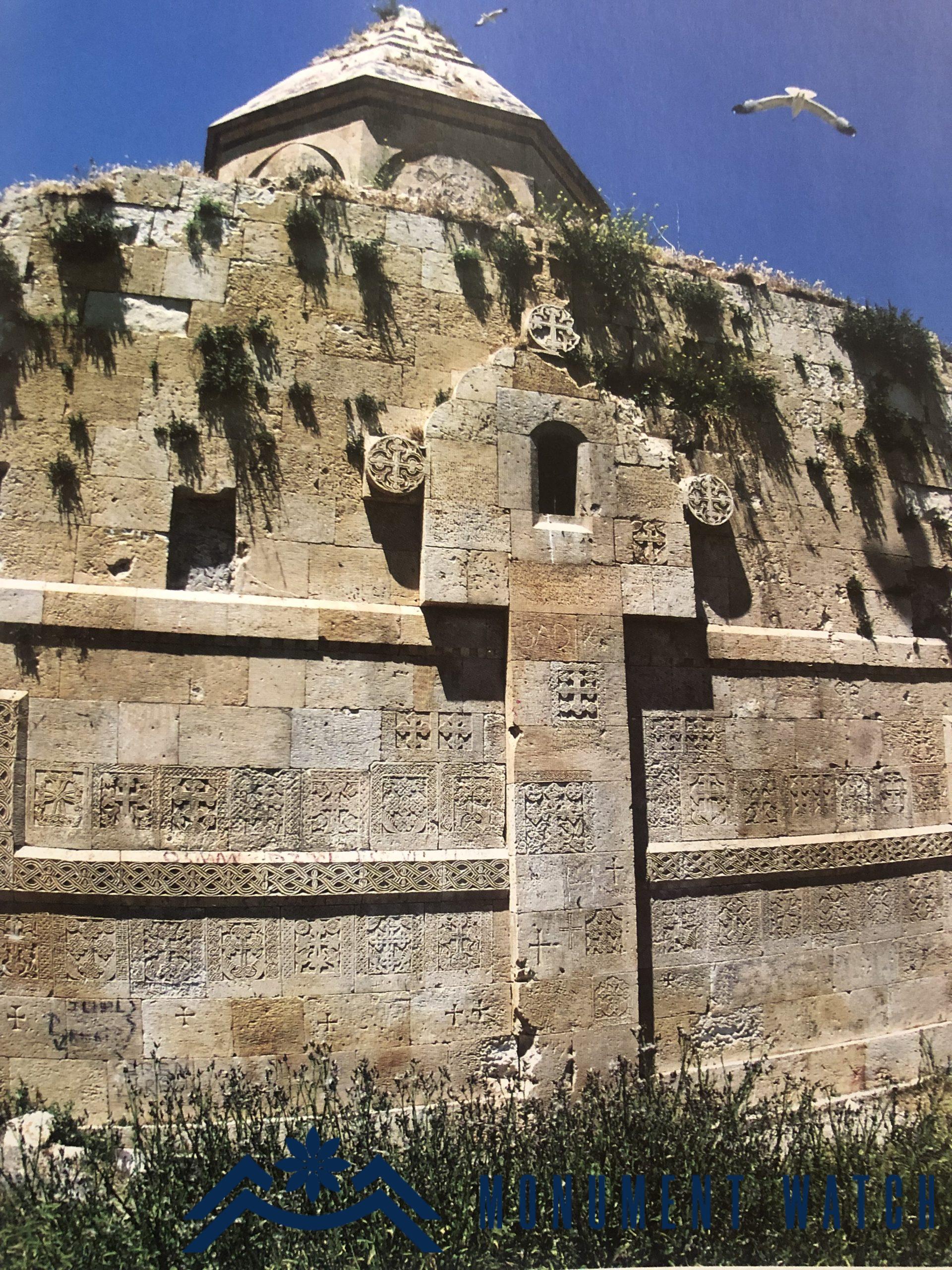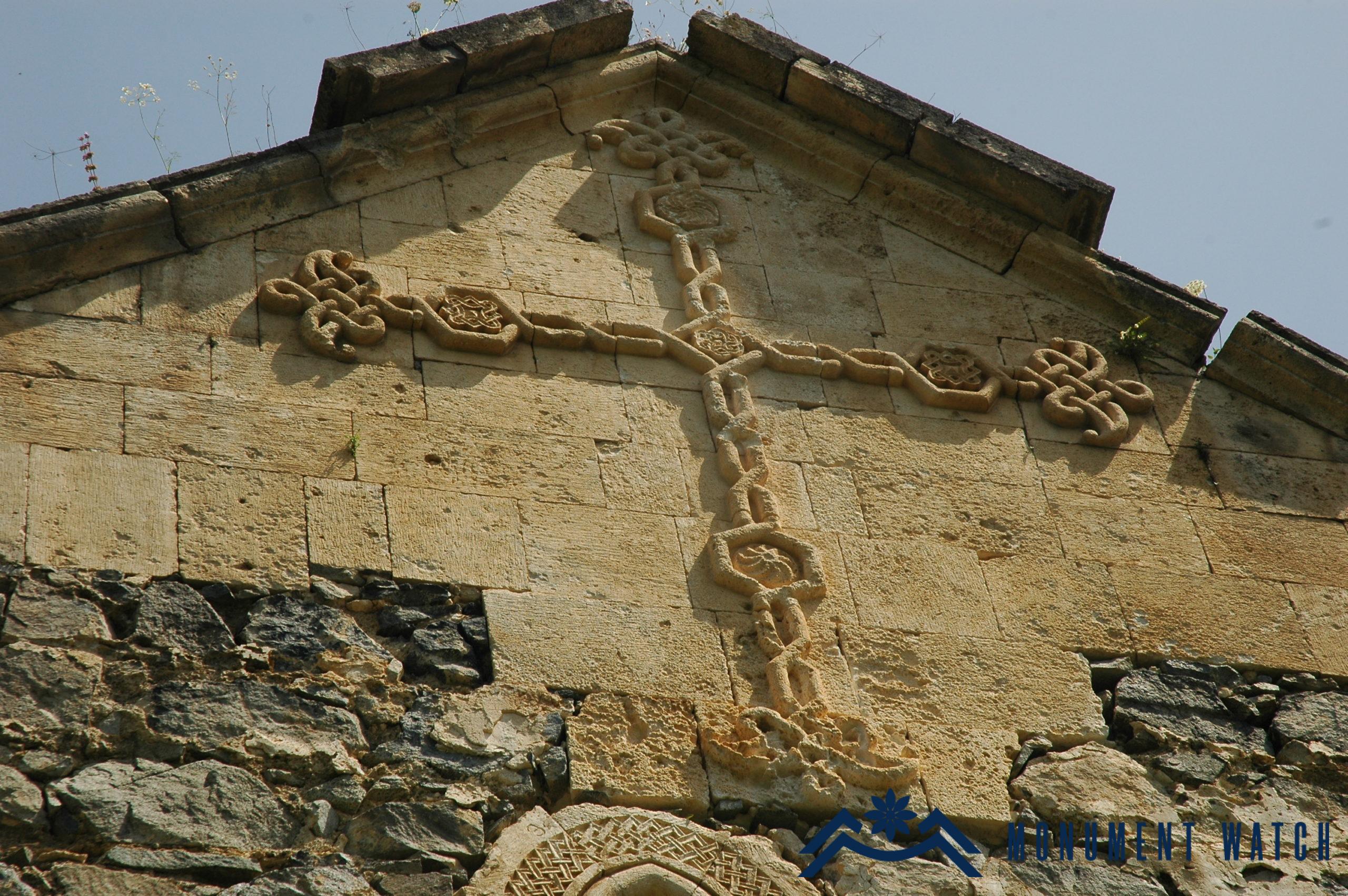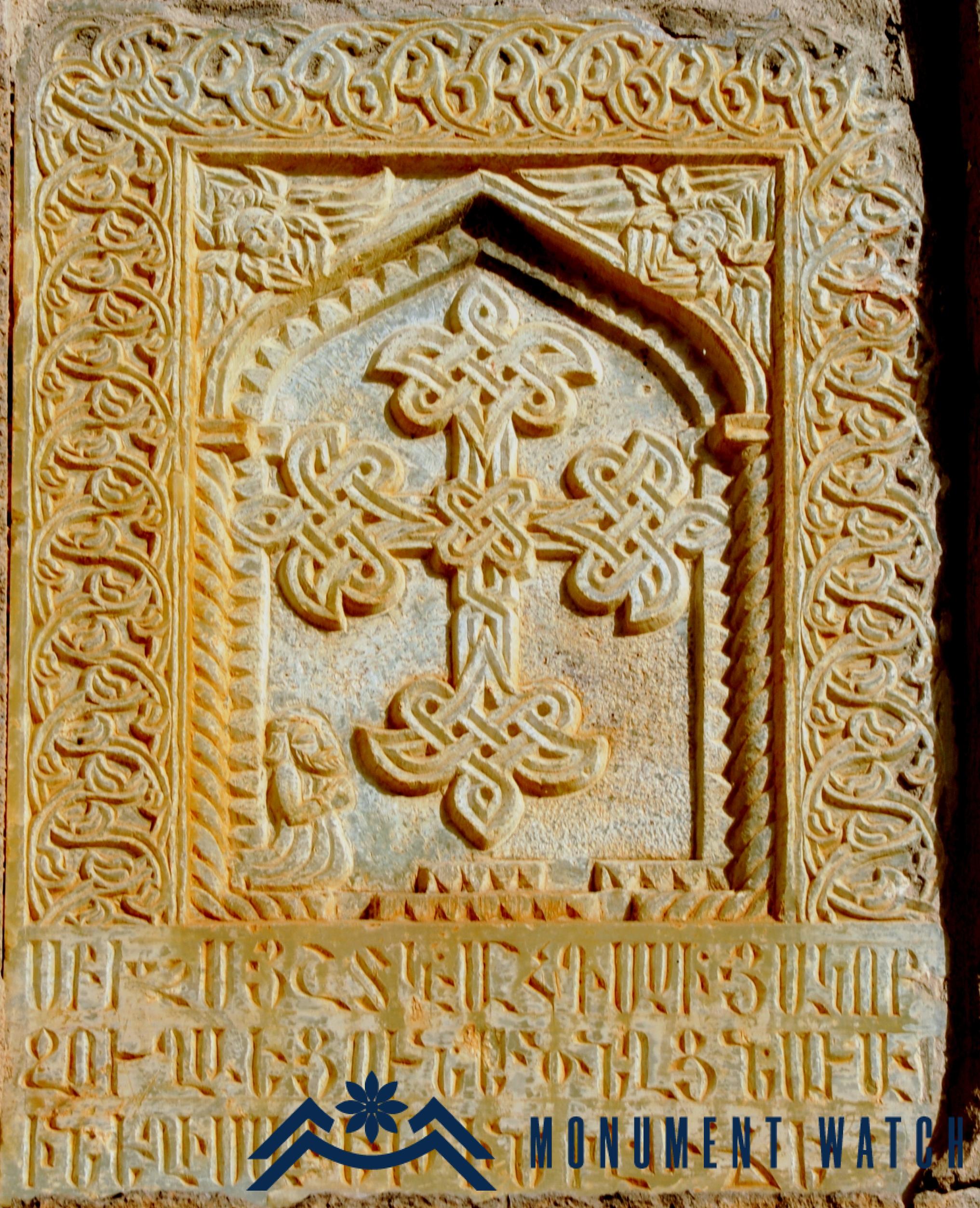Mobili “the inventor” decided to declare the Armenian cross compositions of the 17-19th centuries of occupied Hadrut Albanian
After appointing himself as the religious leader of the Udi community of Azerbaijan, Robert Mobili never ceases to amaze with his ridiculous statements and behavior. Now he once again demonstrated his illiteracy, naming Albanian the engraved crosses and cross compositions on the Armenian monuments of the occupied Hadrut. It is good that he merely is content with the samples of the 17-19th centuries, avoiding appropriating the earlier ones. Otherwise, it could suddenly happen that the entire culture of the khachkars needs to be declared Albanian.
Actually, the statement of Mobili is not his own "discovery". Years ago this "discovery" was made by Azerbaijani "researchers": they presented the carved crosses of the 19th- century church in Nizh accompanied by Armenian inscriptions as Albanian. Knowing nothing about Armenian culture and, in particular, about the art of khachkars, the genesis and development of various compositional types, and iconography of the cross, the Azerbaijani illiterate "inventors" supposed that this type of crosses is unknown to humanity, and therefore these easily can be called Albanian.
Mobili acts in the same way, “making discoveries” that such crosses are also found on the monuments of Hadrut. Of course, according to the logic of the Azerbaijani state forgery, the Armenians most likely had erased the "Albanian" crosses and carved their own. However, naturally, the Armenians did not need to erase anything, since these crosses were carved by their ancestors.
What is the “Albanian” cross declared by Azerbaijanis? This is one of several dozen types of Armenian crosses - a geometric cross “woven” from several threads, the arms of which have ends in the form of almond-shaped ledges. In general, the interlacing of the cross, unique to Armenians, is expressed in the form of combinations of plant and geometric motifs, giving the cross a braided and blooming look. This is one cultural process that originates at the end of the 10th century and exists in various forms until the 18-19th centuries (see Petrosyan 2008, 111-127, Petrosyan 2015, 17-18, fig.1).
We find the same manifestations in Armenian manuscripts. The miniatures with various woven and blossoming crosses, executed with tenderness, illuminate the pages of manuscripts created in almost all Armenian schools of miniatures. The earliest examples of such crosses are found in manuscripts dated back to the 11-12th centuries AD (title page of the Gospel, 1181 AD, Drazark, miniaturist Khachatur, No. 181b), and since the 13th century (Fig. 2, 3) they represent the most widespread type and continue to exist until the 18th century (Fig. 4, 5).
Since about the end of the 14th century, under religious and political pressure, the Armenian culture has experienced a certain decline, and the art of khachkars is gradually losing its former variety of plant-geometric ornaments. The carving becomes finer, the motifs more uniform and repetitive. The images of the crosses become completely geometric, and only in some samples, the former plant motif is expressed in the form of small palmettos rising from under the cross and the lanceolate ends of its arms.
It was a pan-Armenian cultural process that began in the central regions (Kotayk, Vayots Dzor, Gegharkunik, Vaspurakan), then spread to Artsakh, Utik, and in some cases even north of the Kura River (in the 19th century). The answer to the question "why did it include the Albanian church as well?" is quite clear.
Starting at least from the end of the 7th century, the Albanian Church did not differ from the Armenian Apostolic Church either in religious and ritual issues or in iconography, especially since the overwhelming majority of its community was the Armenian population of Artsakh and Utik. Since the 8th century, there has been no separate Albanian Christian culture, no religion, no customs and iconography. There were only local features of construction and implementation, which easily could be called Albanian. And, naturally, Albanian crosses could not exist, unlike the Armenian ones.
However, back to the facts. The first examples of sculptural images of crosses with lanceolate ends on arms existed since the 12th century (Fig. 6), but they have been widely used since the middle of the 14th century (these are, for example, the khachkars of Arinj, Bjni, Havutstar, Por bearing dated inscriptions, see Fig. 7-10). This wave covered the whole of Armenia and then spread to Artsakh and Utik. During the period of the political and cultural shift of the 17th century in the Armenian territories that were under the rule of Persia, this type of crosses became the main one: their various combinations decorated the facades, tympans and portals of new churches (Fig. 11-13), khachkars and tombstones.
Thus, new types of crosses and cross compositions were created in the 14-15th centuries in the central regions of the Armenian Apostolic Church, and in the 16-18th centuries they spread throughout the Armenian territories with the Armenian population and the Armenian faith - just for the semi-literate Mobili and his inspiring entourage to make "amazing" discoveries and call them Albanian. It is impossible to imagine a more ideal example of scientific "ethics".
Literature
- Petrosyan 2008 - Petrosyan H., Khachkar: genesis, functions, iconography, semantics, Yerevan, "Printinfo" (in Armenian)
- Petrosyan 2015 - Petrosyan H. Khachkar, Yerevan, “Zangak”.
